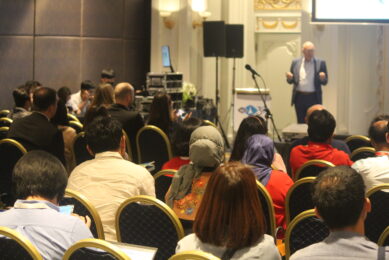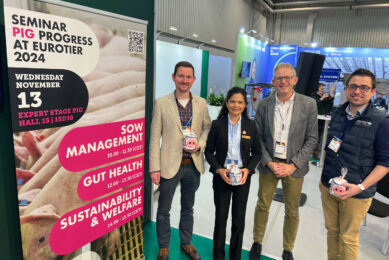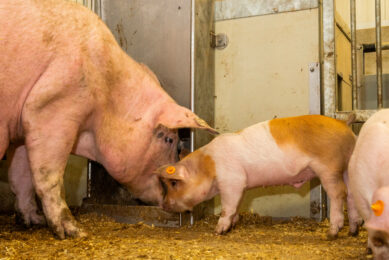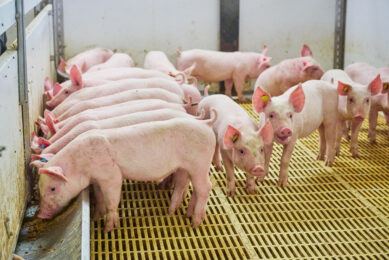What to look out for at EuroTier 2018?
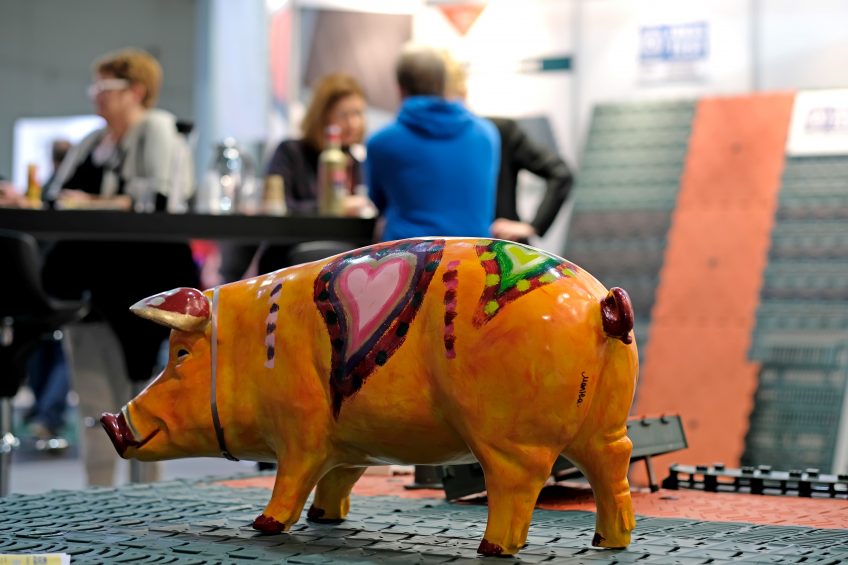
Just as in the past, a lot of new pig innovations will be displayed at the upcoming EuroTier. Several have been awarded prizes, others are keeping up with the times and demands, while a third category emphasises animal welfare. Here is Pig Progress’ pick.
Vacuum cleaner for feed
Meier-Brakenberg; Hall 16, stand G04
The manual emptying of a trough can be cumbersome and ineffective, paving the way for bacteria or mould. The Speedy trough cleaner, winner of the only golden medal this year, connected to the gun of a high-pressure cleaner, can remove dry and wet feed remains from troughs quickly. Once the feed is sucked out, it can be caught in a container or through the slats. After emptying, the trough can be cleaned quickly with the washing lance by switching over to the cleaning nozzle.
Easy-to-clean walls
ACO Funki; Hall 15; stand F37
With African Swine Fever having entered Europe, the question of good cleaning and disinfection is all the more relevant. Having easy-to-clean walls for grower and finisher pens is one of the remedies. Funki Fiber is a new type of massive pen wall, made of fibre board. All ‘elements’ are located on the outside of the pen – meaning that there is virtually no object on the inside, where tiny manure particles can hide.

Mobile disinfection gates
Meier-Brakenberg; Hall 16, stand G04
Also a good investment during these days of ASF: Mobile or static disinfection gates. They can be relatively easily assembled and guarantee an output of 0.4 litres/m2 at a passage speed of 2.4 km/h. It also takes care of disinfecting the bottom side of the car. Remarkably, the mobile version is more robust than the static version, given that the mobile version has to be able to withstand dismantling, moving and being built up anywhere else.

Feeding for less boar taint
Dumoulin; Hall 22, stand C13
Belgian feed company Dumoulin will showcase a feeding concept aimed at reducing boar taint. That is achieved by feeding certain carbohydrates, in particular inulin or starch with a low small intestine digestion. The silver medal winning feed concept influences bacterial digestibility in the large intestine and the related production of skatole and indole. It is said to lead to a considerable reduction of skatole contents, and therefore to much lower odour levels in meat.

Novel yeast combinations
Leiber; Hall 20, stand B51
German yeast company Leiber has been marketing its brewers’ yeast for animals to high fibre carriers from grain origin, i.e. As from this year, there will be an addition of this portfolio, with several non-grain sourced fibres, which could be for instance from plant origin. The exact components will be revealed at the show. The entire range will be sold under the new Yeast Fibre concept.

Pig toilet
Big Dutchman; Hall 7, stand B21
A silver medal winning innovation: a pig toilet, with direct separation of urine and faeces. The toilet consists of a conveyor belt made of plastic elements. Urine and other liquids flow through openings between the individual plastic elements into a catch trough within the supporting structure and are routed there into a separate storage tank. The faeces, litter or e.g. straw are transported out of the pen by the conveyor belt and from there can be removed from the barn with a faeces collection duct or additional conveyor belts.

Indoor pigs on straw
Big Dutchman; Hall 7, stand B21
German company Big Dutchman will present a concept for indoor pigs on straw. Their solution will be displayed as the Xaletto concept, combining odour reduction with higher animal welfare. The concept has a nutrition as well as a ventilation component and an automatic straw dispensing system. The aim is to let biology do her work and encourage ‘aerobic decomposition’ of manure. Once the pigs have left, a scraper takes all the straw and slurry, ready for use on land.

Dust valve
Weda; Hall 17, stand D04
This innovation of Weda, called ‘Dust Control’, is a valve that can be added to an air outlet in a feeding kitchen. With all the air blown out during liquid feed production, often feed dust particles come out as well, covering everything in the kitchen with a layer of dust in no-time. The metal valve, mounted on three legs, will lift up slightly with overpressure and allow air to go through, but 95% of the dust will stay inside the tube.

Sow weight control
Nedap; Hall 17, Stand F18
How is it best to monitor sow weight development, especially when they are in group housing during gestation? At technology and data company Nedap, after long phases of experimenting, they concluded that the best way to do so is by automatically comparing today’s weight to that of yesterday. Needed: weighing scales, RFID transponders and a warning system in case a sow, contrary to expectation, is losing weight.

New trough type
Hölscher + Leuschner; Hall 15, D41
The SowTakeAway concept of German livestock equipment company Hölscher + Leuschner was launched at EuroTier 2016. It is a combination of a farrowing and growing pen (weaning happens by taking the sow out), but what is new this year are technological elements inside the pen. Worth noting is the addition of a liquid feeding trough at piglet size which can be used by piglets while learning how to eat from their mothers.

Taller trough
Verbakel; Hall 16, stand A04
Dutch metal equipment company Verbakel is a supporter of lactation and growing in the same pen. So weaning occurs by just taking out the sow. As a result, piglets can learn the art of eating from their mothers and will continue to do so when she has left. Experience taught Verbakel that sow and piglets can manage with exactly the same trough, so to keep things simple, they designed a taller version of its KZB feeder: one size fits all.

ESF presented simpler
Schauer Agrotronic; Hall 17, stand D55
Electronic Sow Feeding (ESF) systems are not always the easiest types of systems to work with as they require good preparation and education of staff and sows. Austrian company Schauer therefore designed the Compident 8, an ESF system that looks much like conventional free access stalls and encourages simultaneous feed intake, in both fixed and dynamic groups. It is possible to feed up to 25 sows with one station.




